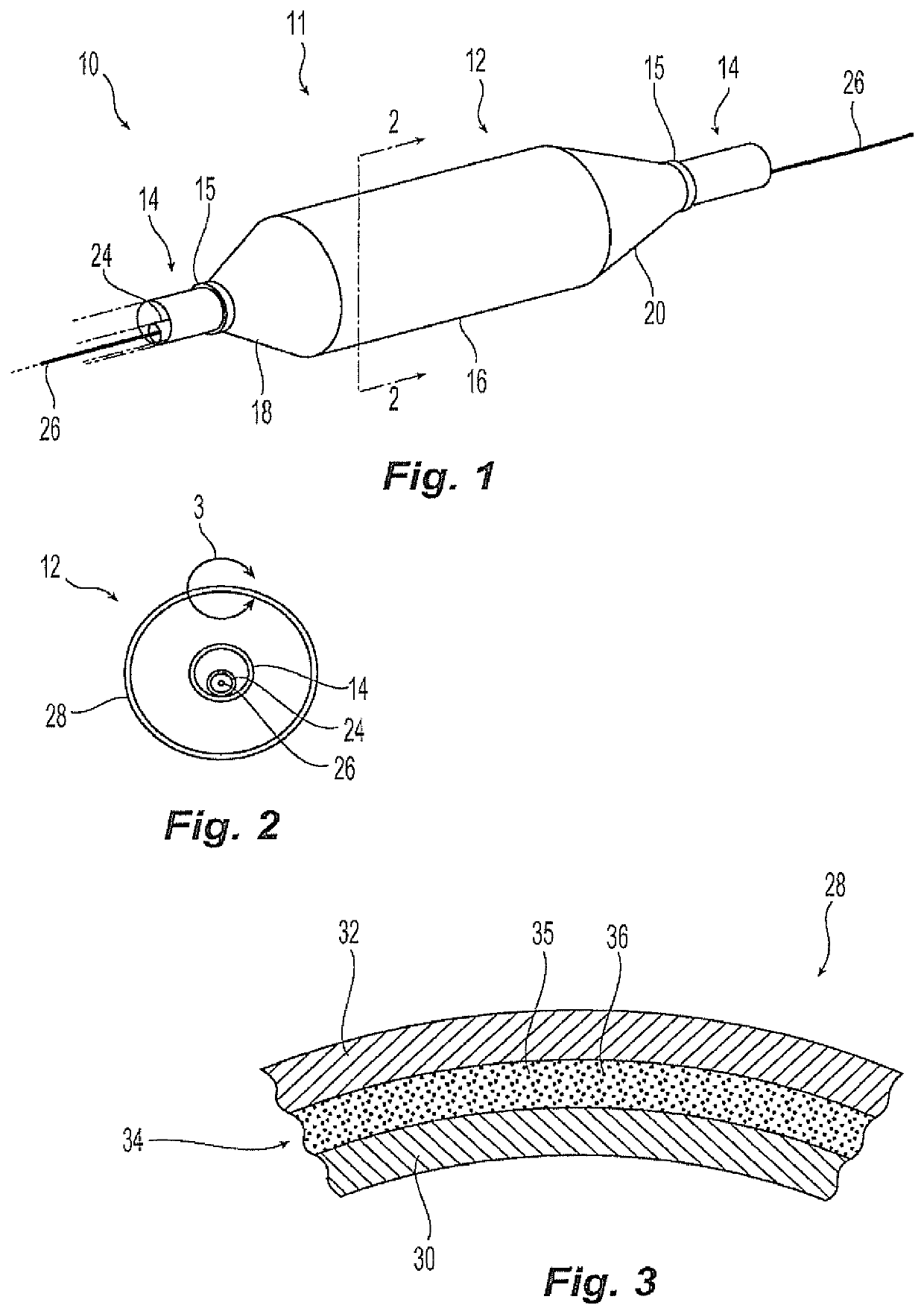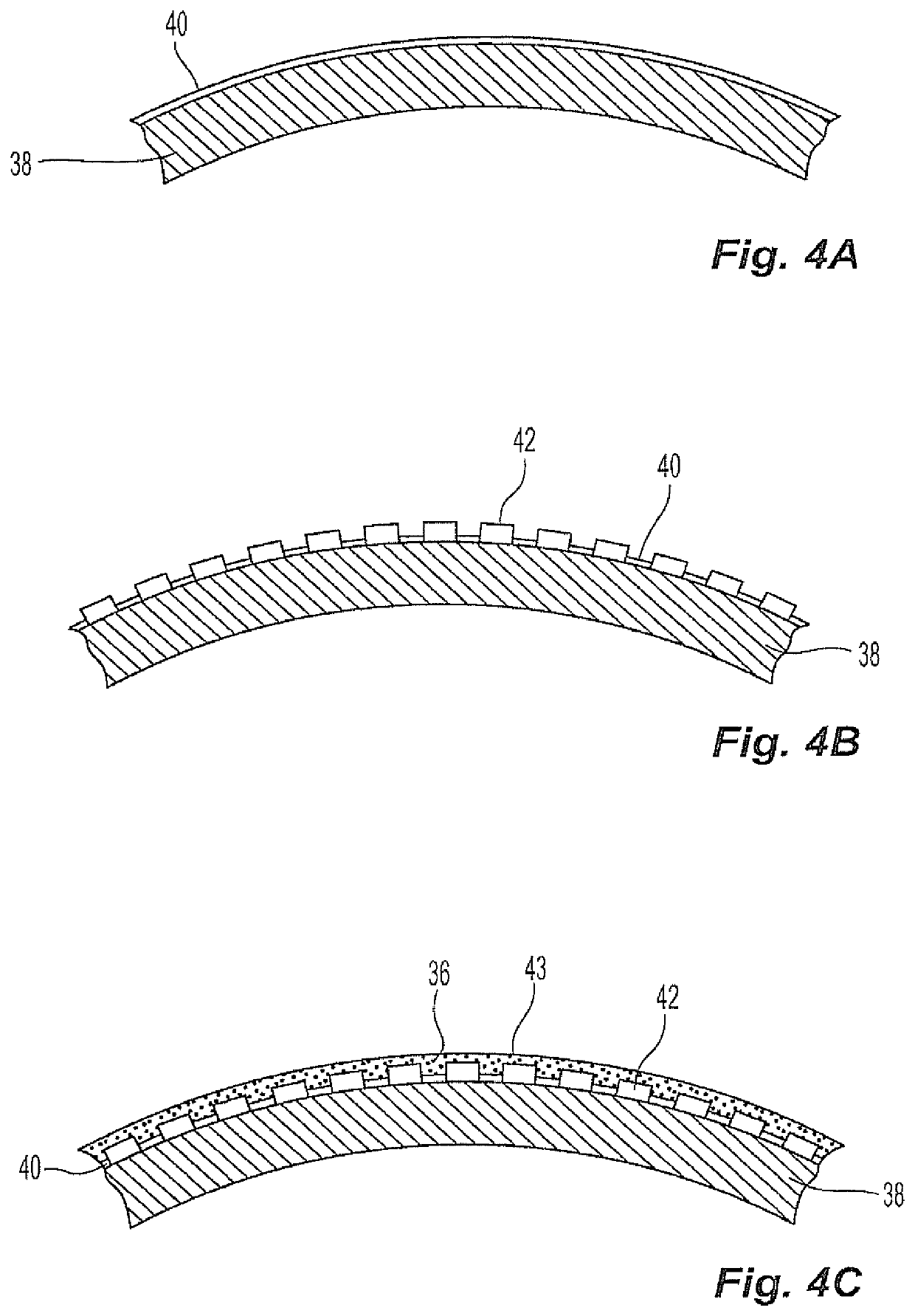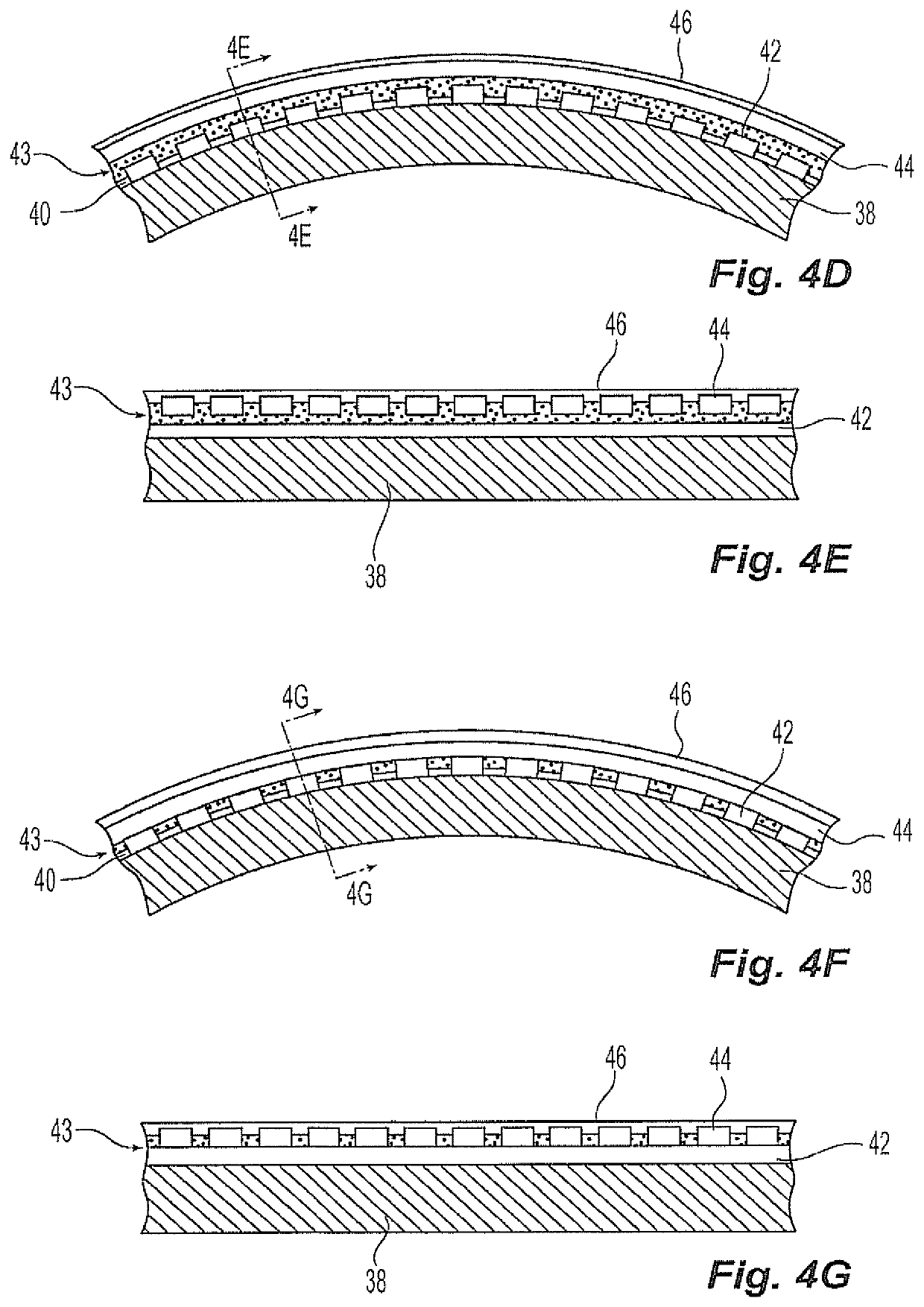Balloon with radiopaque adhesive
a radiopaque adhesive and balloon technology, applied in the field of balloons with radiopaque adhesive, can solve the problems of increasing the time required, requiring more preparation time, and requiring more imaging fluids, etc., and it is difficult to determine the exact edge of the balloon
- Summary
- Abstract
- Description
- Claims
- Application Information
AI Technical Summary
Benefits of technology
Problems solved by technology
Method used
Image
Examples
example 1
[0063]A radiopaque adhesive was prepared by adding the following components into a glass mixing vessel:
[0064]1) 54 grams of a polyurethane laminating adhesive available as Tecoflex® 1-MP adhesive having approximately 8.5 wt. % polyurethane in solvent;
[0065]2) 24.5 grams of tungsten powder, 0.5 micron nominal particle size; and
[0066]3) 36.6 grams of methyl ethyl ketone (MEK).
The components were mixed to produce an adhesive with a homogeneous composition of approximately 25 wt % solids.
[0067]Polyethylene terephthalate (PET) angioplasty balloons, measuring 12 mm in diameter and with a double wall thickness of approximately 0.002 of an inch, were mounted on mandrels to allow the balloons to be inflated. The inflated balloons were sprayed with the radiopaque adhesive to dispose a uniform quantity of adhesive over the surface of the balloons. The adhesive was rapidly dried on the surface of the balloon. The dried adhesive contained approximately 26 volume % of tungsten and 74 volume % pol...
example 2
[0070]A radiopaque laminating adhesive was prepared by adding the following components into a glass mixing container:
[0071]1) 61 grams of a polyurethane laminating adhesive available as Tecoflex® 1-MP adhesive;
[0072]2) 14.6 grams of bismuth trioxide powder;
[0073]3) 24.4 grams of MEK; and
[0074]4) 15 grams of acetone.
The components were mixed to produce an adhesive with a homogeneous composition of approximately 17 wt % solids.
[0075]Polyethylene terephthalate (PET) angioplasty balloons, measuring 12 mm in diameter and with a double wall thickness of approximately 0.002 of an inch, were mounted and sprayed with the adhesive and dried as described in Example 1. The dried adhesive contained approximately 26 volume % of bismuth trioxide, and 74 volume % polyurethane. The balloons were then wrapped helically with Pebax® film and laminated under heat and pressure as described in Example 1 to produce consolidated laminated balloons.
[0076]The result was a radiopaque angioplasty balloon with a...
example 3
[0077]A radiopaque laminating adhesive was prepared by adding the following components into a plastic mixing container:
[0078]1) 297 grams of a polyurethane laminating adhesive available as Tecoflex® 1-MP adhesive;
[0079]2) 146 grams of bismuth trioxide powder;
[0080]3) 119 grams of MEK; and
[0081]4) 238 grams of acetone.
[0082]The components were mixed together briefly and then charged in a laboratory ball mill jar charged with aluminum oxide ceramic balls. The jar was then rolled on a ball mill roller for 24 hours to reduce the particle size of the bismuth trioxide, after which the mixture was removed from the ball mill and stored in a glass container. The result was an adhesive with a homogeneous composition of approximately 18 wt % solids.
[0083]Polyethylene terephthalate (PET) angioplasty balloons, measuring 12 mm in diameter and with a double wall thickness of approximately 0.002 of an inch, were mounted and sprayed with a thin coat of the adhesive and dried as described in Example ...
PUM
 Login to View More
Login to View More Abstract
Description
Claims
Application Information
 Login to View More
Login to View More - R&D
- Intellectual Property
- Life Sciences
- Materials
- Tech Scout
- Unparalleled Data Quality
- Higher Quality Content
- 60% Fewer Hallucinations
Browse by: Latest US Patents, China's latest patents, Technical Efficacy Thesaurus, Application Domain, Technology Topic, Popular Technical Reports.
© 2025 PatSnap. All rights reserved.Legal|Privacy policy|Modern Slavery Act Transparency Statement|Sitemap|About US| Contact US: help@patsnap.com



